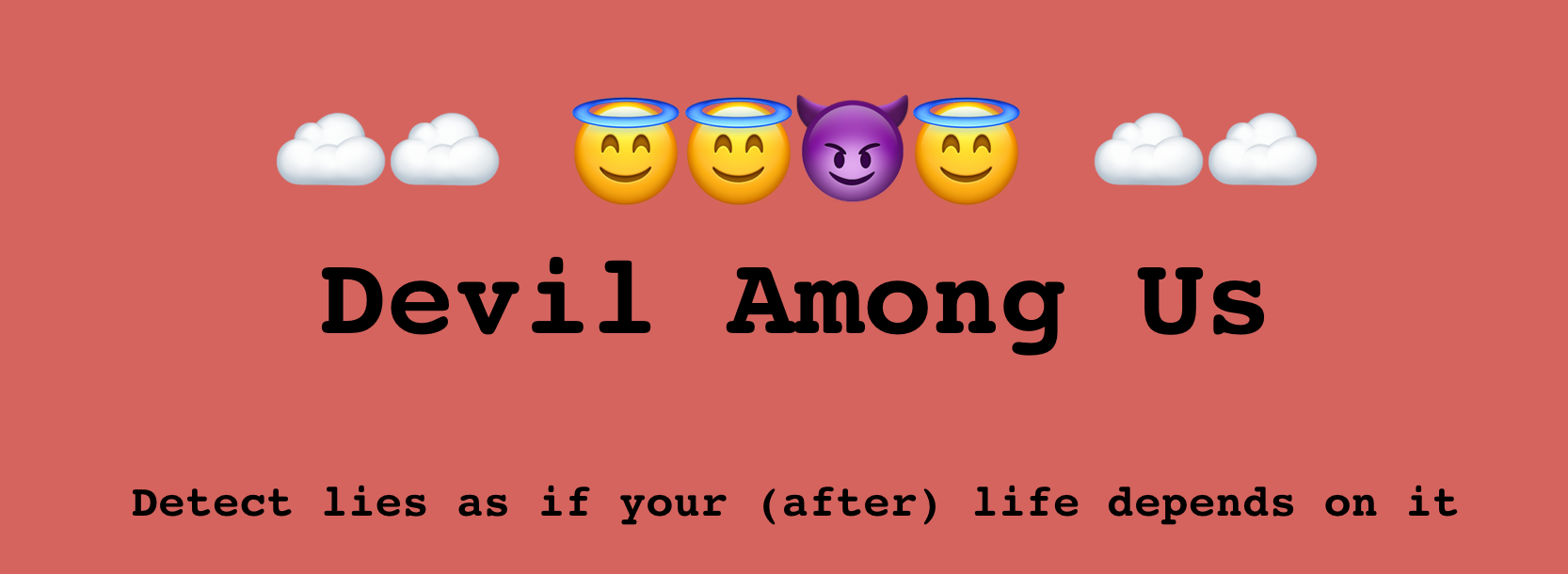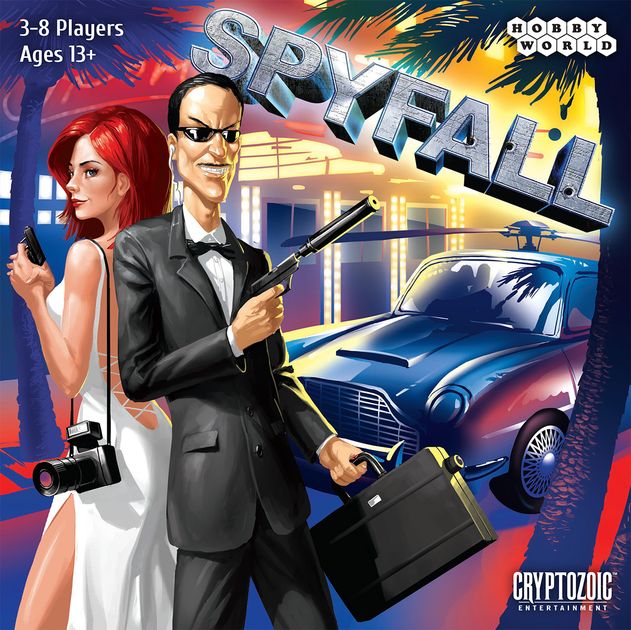Welcome to heaven! Or so you think. Turns out, God has become pickier than before and now has a new rule for folks wanting to enter heaven: they must be able to tell when people are lying.
In order to verify who does or does not belong in heaven with these new rules, everyone must participate in a group lie-detecting simulation. God will give each player a question, as well as an instruction of whether to tell the truth or lie. After each player answers, everyone else will vote on whether or not they think that player is telling the truth or lying. Players can only vote a total of four answers as lies. This continues until every player has answered two questions each.
There is one catch: one person in the group is from the Devil and is trying to bring everyone down to hell with them. They can only lie, regardless of what God tells them, but they will try to trick everyone else into thinking they are telling the truth.
After everyone has answered two questions, God will reveal if the players have mistakenly voted any of the lies as truths. If no lies were mistaken as truths, then everyone will go to heaven, and the Devil goes back to hell! If there were any lies mistaken as truths, however, the group still has one saving grace: if they correctly vote who the Devil is, they can send the Devil back to hell and re-enter heaven. Otherwise, the Devil wins and will bring them all to hell.
To play:
Concept Map
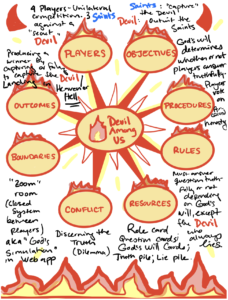
Formal Elements
Players
There are three Saints in a game and 1 Devil. Players’ identities are secret and are revealed at the end of the game.
Objectives
The Saints’ objective is to identify the Devil and make it safely into heaven. The Devil’s objective is to go undetected and drag all the Saints down to hell.
Procedures
Starting action: Each player draws a role card (Saint or Devil). They will play this role for the duration of the game (2 rounds).
Progression of action: Players take turns answering questions. Each question comes with “God’s Will” for the simulation. God will indicate whether the Saint needs to lie or tell the truth. Saints must follow God’s Will. Once answered, other players can deliberate and vote if their answer was “Honest” or “Dishonest.” Once everyone has answered a question, that round is complete.
Special action: The Devil will reject God’s Will and will always lie, even God instructs them to tell the truth.
Resolving action: At the end of two rounds, once each player has answered two questions, God will reveal if the players have mistakenly voted any of the lies as truths.
Rules
- All players except the Devil must follow God’s Will when answering the designated questions.
- After answering a question, players can deliberate and share their vote verbally with other players.
- Players must vote each answer as “Honest” or “Dishonest.” Majority vote decides the result.
- Players cannot vote for themselves.
- Players can only vote a maximum of four answers as lies.
Resources
While designing this game, we intended to build a card game. Through play testing, we decided it would be a better experience for players to utilize a web app that automates some of the rules and procedures. There are 3 types of “cards” used in this game, all of which are now automated and randomly assigned by the web app:
- Role cards (one “Devil” role card and the rest are “Saint” role cards);
- Question cards (these cards have questions on them)
- God’s Will cards (these cards have the words “Honest” or “Dishonest” on them)
Boundaries
This game is designed to be played remotely. The boundaries are the “Zoom room,” as well as the emotional space between the 4 players in “God’s simulation” between heaven and hell.
Outcomes
The outcome of the game is to produce a winner by identifying or failing to identify the Devil by game’s end. The Saints will either make it into heaven safely, or be dragged down to hell.
Tips & tricks
As a Saint, your goal is to detect the Dishonest Devil as quickly as possible. Thus, if God’s Will is for you to be dishonest, you want to make your answer as obvious a lie as possible.
As a Devil, your goal is to go undetected. Given that you must always lie, you may want to tell more obvious lies when God’s will instructs you to be honest and less-obvious lies when God’s Will is to be dishonest.
Types of fun
Fellowship
This game is designed around fellowship as the core concept of fun. It revolves around the social framework of the 4 players assuming secret roles. Inferences must be made in order to correctly detect who among you is a Saint and who among you is the Devil. In other words, be careful who you trust! You might end up in a cloudy heaven or fiery hell.
Discovery
A second aspect and dimension of fun is discovery. The questions are designed to be intriguing, getting to know you questions that lend themselves well toward both truths and lies. In order words, this game asks players to navigate uncharted territory by exploring potential answers to personal questions. For example, how many squares of toilet paper do you use per wipe? Imagine getting asked that on Judgement Day.
Challenge
A third aspect and dimension of fun for this game is challenge. The primary obstacle of each round is to identify who is lying and who is being truthful (e.g., deception). Over a series of two rounds, the challenge is to observe patterns of potential truth telling and deceit to discern who amongst the players is the Devil. It’s the Devil’s prerogative to introduce seeds of doubt amongst the Saints during deliberation.
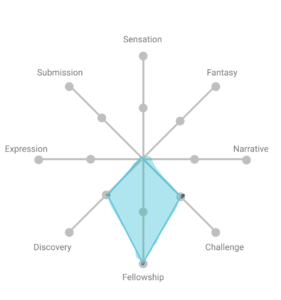
Testing and Iteration History
We play tested 5 times with 20+ players including classmates and friends to learn how players would interact with the game and to refine the mechanics, dynamics, and aesthetics of Devil Among Us.
Play Test 0
Between our team of four game designers, we tried out the questions to see if one could figure out a lie even if they are not playing with close friends.
What didn’t go well
Some questions felt too ambiguous, wordy, unclear, and/or difficult to lie about. For example, “a year from now, what will you wish you had done today” caused players to think too much.

What went well
Answering questions helped us determine the estimated timing of the game (15 minutes felt just right). We also figure out the amount of questions we would want to go over in one game (2 per player).
What we learned
While we initially envisioned a progressive increase in the amount of disclosure required to answer the questions, we learned that 3 levels was too much. We decided to cut levels 2 and 3 for simplicity.
Play Test 1
We built and tested a prototype of our game using a Figma Plug-in to simulate a deck of cards with 4 users. This allowed players to “Look at Cards privately.”
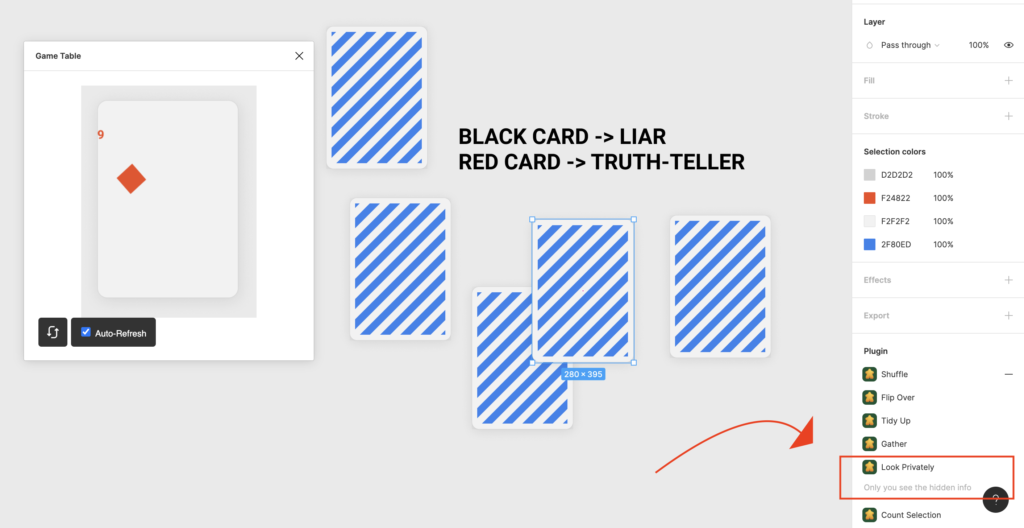
What didn’t go well
We discovered that it was difficult to get the players oriented to the Figma board and that the pacing is a little slower with a moderator on Zoom, as we struggled to define roles and secretly assign them.
What went well
We iterated quickly and leveraged the private messaging function in Zoom as a way of assigning roles and “answer-integrity” cards which we eventually rebranded as “God’s Will” cards.
What we learned
The rules of the game were not intuitively clear to players and we learned that we needed to refine them based on the feedback. We decided to add a “Tips and Tricks” section to help players understand their objective and strategize accordingly.
Play Test 2
We play tested with 4 new users, again using Figma and direct messaging over Zoom to “deal” out the cards.
What didn’t go well
The end state / game termination procedure was still unclear, even after refining the documentation. Players struggled with the concept of multiple decks to manage and the “truth deck” depletion mechanism. One player also mentioned that with long repeated rounds of question-answering, it was hard to build suspense or interest around the card-building goals.
What went well
Players found the “Tips and tricks” section in rules was very useful. We used a higher proportion of “honest” cards and felt that this made the lies stick out more — we decided to continue with having a higher proportion of “honest” cards (3:1 ratio).
What we learned
We discovered that some questions are a little hard to tell truth/lies. We used the players’ feedback to refine our list of questions. We also learned that knowing the person personally before made it easier to call them out in lies. We decided to build a web app since it continued to be difficult to moderate over Zoom. We also added information about the remaining honest and dishonest cards throughout the game, so users would have a better sense of how they were progressing toward their final goals during the game (as opposed to only finding out at the very end).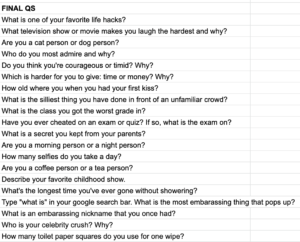
Play Test 3
We play tested with 4 new users, this time replacing our Figma prototype with a web app.
What didn’t go well
One player pointed out that “truth teller” might not be the right term to use, since truth tellers will sometimes lie depending on their “answer integrity card” (later rebranded to God’s will card). They suggested a cover story to help players understand the game mechanics.
What went well
The mechanics of the game worked well this time, since the procedures were automated by the web app. This seemed to help players focus on their truth telling or lying. Players had no problems with the questions this time, which was a helpful signal to us that we landed on a good set of final questions.
What we learned
We learned that we needed a moderator view and screen share option to allow everyone to see what is happening when the game is played over Zoom — the note-takers from our team who were present were not able to participate, and did not have context on the game due to lack of shared visuals. To increase learnability, we simplified the mechanics and added a cover story that helped illustrate the mechanics. For example, we create a scenario of God simulating a lie detection game in order to gain entry into heaven. We also simplified the game end state conditions to make it easier to track.
Play Test 4
We play tested with 4 new users and a refined version of our web app.

What didn’t go well
We played 4 times and ran out of questions, so we resorted to our spreadsheet of questions rather than relying on the app. One of the games ended with a tie, and the players were not sure how to move forward. While technically included in the rules, we need to clarify what happens when a vote is tied (Devil wins).
What went well
They really liked it and said, “It’s a good game for getting to know each other” which is one of our core experience objectives.
What we learned
We learned that we needed to summarize the results and actions near the end of the game so that players can have information they need to cast their last vote. We decided to show a voting log with which questions were voted as honest / dishonest. We also added more questions!
Play Test 5
What didn’t go well
The devil one round only got to answer one question because the group voted too many lies. For this reason, two rounds felt like it was too short. Maybe 3-5 would be better so the game requires more still and less chance.
What went well
The players had a lot of fun getting to know each other. They were close friends and still managed to learn something new about each other (e.g., “I can’t believe that!” or “I didn’t know that!”). They also appreciated the sound at the end announcing the winner and understood the cover story (“How do we get into heaven you guys!!?”)
What we learned
We received feature requests for a vote lock-in mechanism at the end and also to be able to start a new game without creating a new link. We learned that the fun was delivered and that “It felt more like a get to know you than a deception game, in a good way. It was more thought provoking to get to know the person, that’s kind of cool.”
Design Mockups
Our visual language leverages the color red (symbolizing the risk of failing into a fiery hell) and emoji (fire emoji, angel emoji, devil emoji) to add personality to the game. We also selected a monospace font, inconsolata, that communicates a sense of friendliness and fun. While our final game has been adapted for remote play over Zoom through a web app, we also designed cards that could be used in an in-person setting. Our web app can be played across platforms: desktop, tablet, and mobile.
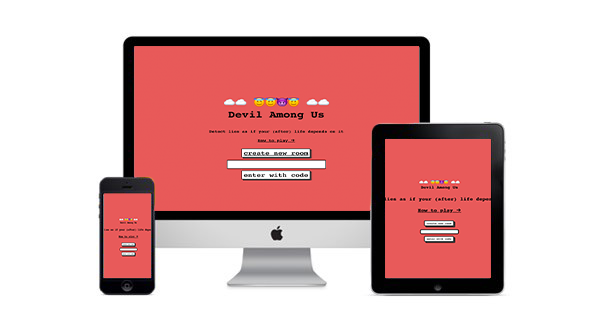
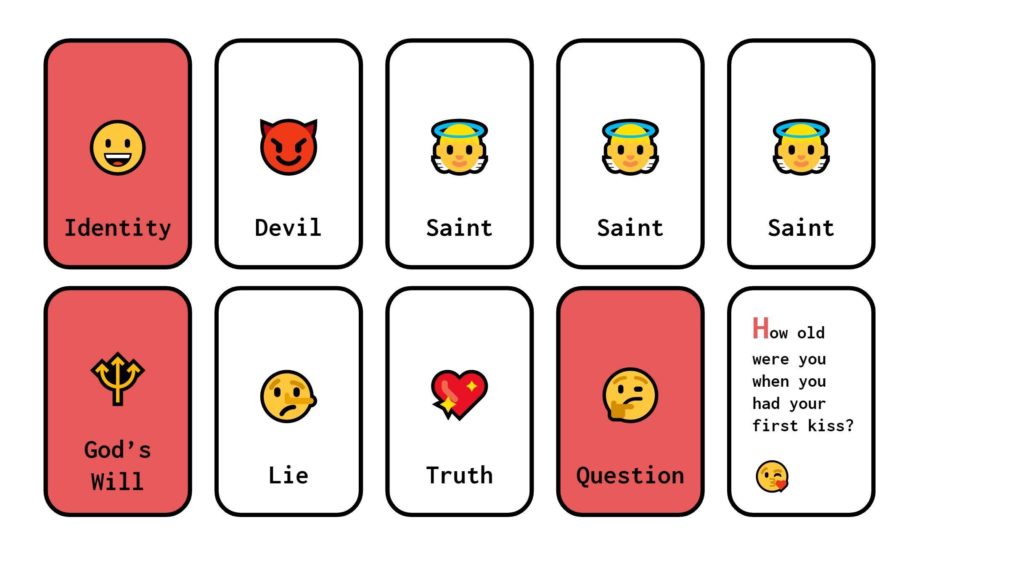
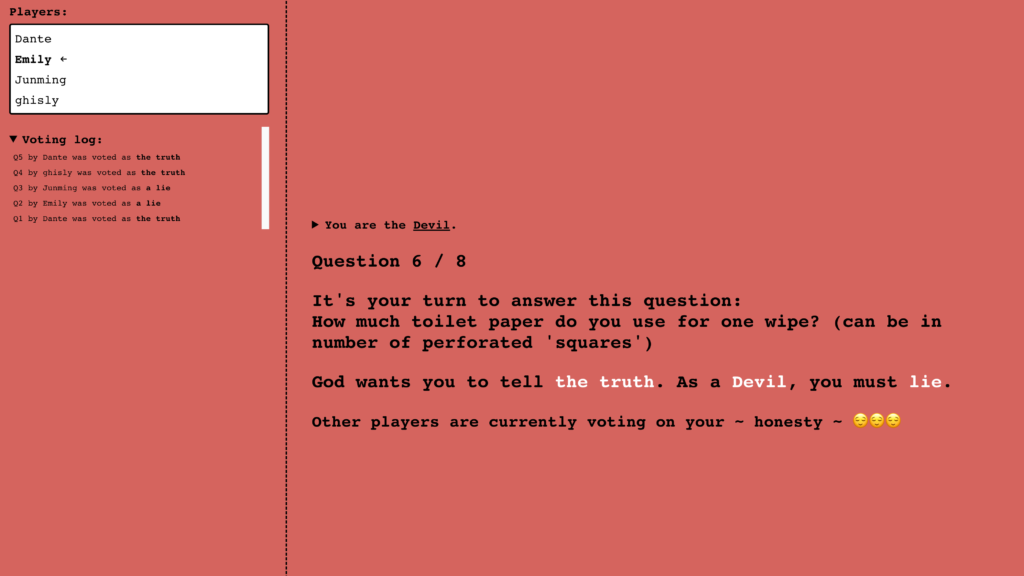
Conclusion
We had a lot of fun designing this game for you and hope you enjoy playing it. Looking back at our game design process, our meta learning is around the importance of play testing. Our observations helped us identify where to focus our energy. By resolving pain points and clarifying points of confusion, we landed on a game that is not only playable but easily learnable and fun to play. At the very least, we hope players will come away with a sense of fellowship and learn at least one new thing about each other. This project helped us all “trust the process” and learn from each other, as we all had different sets of skills to contribute — from coding, to marketing, ideation, and writing.
Special thanks to all our play testers, Daniel Cook, Kally Zheng, and Christina Wodtke for their invaluable feedback and support along the way.


